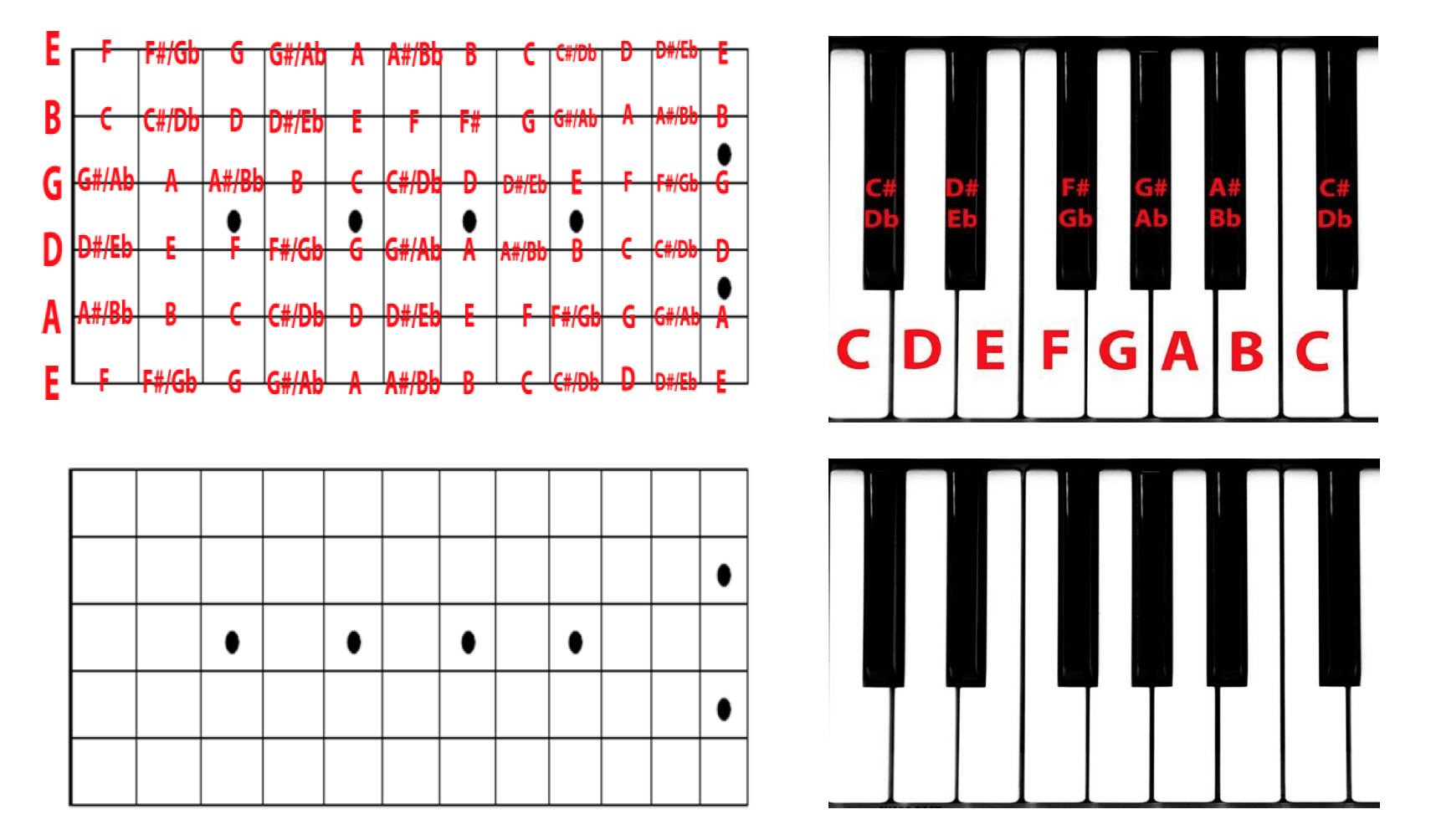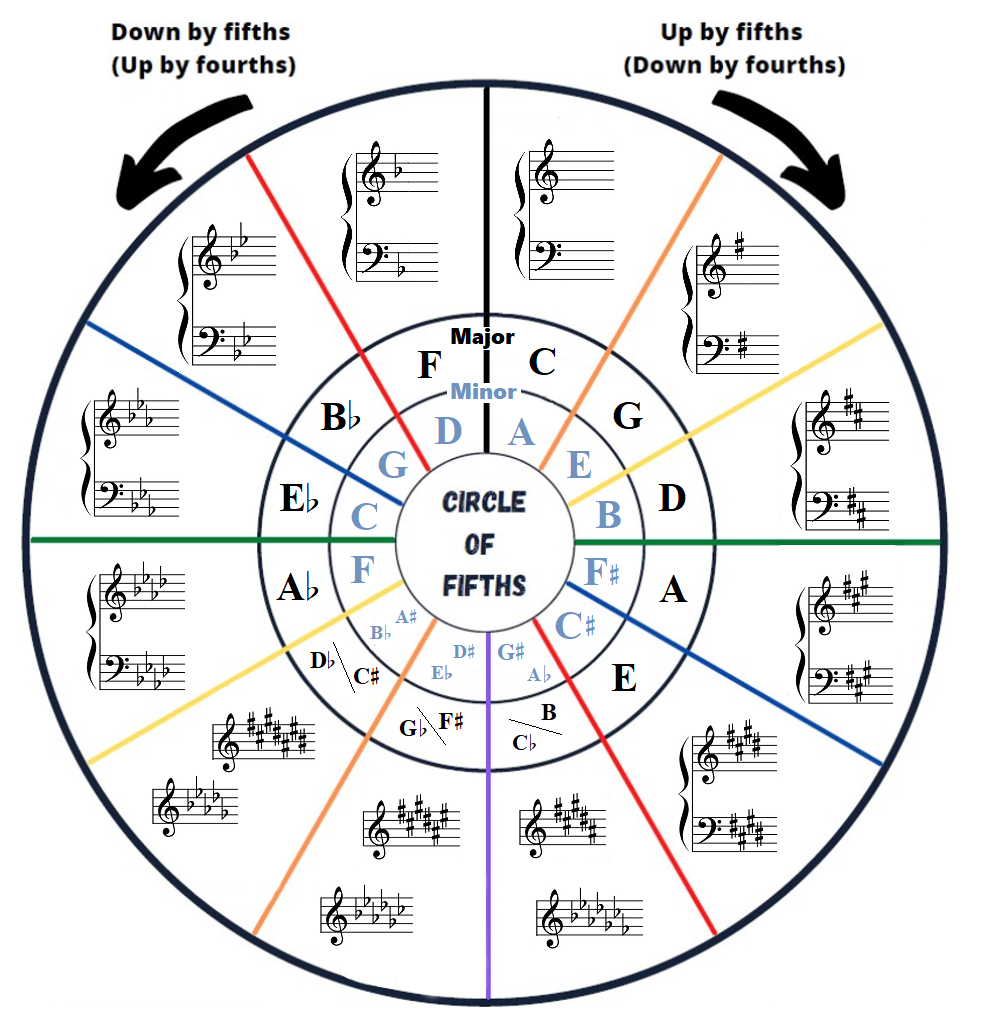Music Theory
The University of Edinburgh - Fundamentals of Music Theory
Concept
Bear in mind that the COURSERA site uses American terminology, whereas we are teaching this course using UK music theory language. It is good to be familiar with both. The following translations should help!
- Staff = Stave
- Measure = Bar
- Quarter notes = Crotchets
- Eighth notes = Quavers
- Half notes = Minims
- Whole notes = Semibreves
Week 1
Week 2
Sharps and Flats

Keys and Key Signatures
Circle of Fifths

Week 3
Five fundamental concepts
Music theory uses a number of concepts to talk about musical time and rhythm. Five fundamental concepts
The five concepts that we will focus on in this video are: beat, tempo, metre, bar and grouping.
A beat or a pulse usually describes the attribute of a musical composition which is regular and which has a rate that is closest to, say, footsteps or a comfortable finger click.
A tempo describes the rate of those beats.
Metre, metrical organisation. It's the next level up, if you like, from the beat. The beat is there, but to hear the sounds as being musical, we hear more than just a succession of beats all the same. The next concept is bar. We might talk about the number of beats in the bar. The number of beats in the bar, that is another way of talking about metre. The bar, also known as a measure, is a notional unit which relates to one complete metrical cycle. In other words, one cycle of the metre. In stave notation, a bar is shown by a vertical line that runs from the top line of the stave down to the bottom. So, here's a bar, and you'll remember that with stave notation, All of these are part of the ways that we can theorise about musical rhythm. But, finally, there's one more we should think about -- grouping. Grouping lets us talk about the way we hear musical sounds as belonging together, somehow, as phrases.
Dots and Ties
Dot: A dot always sitting to the right-hand side of the notehead changes the duration value of that note. It always adds on half of the duration again.
a double dot tells us that the note duration should be the original note value plus half again, plus half of that again.
Week 4
Q A
How many times would a guitarist pluck a note when playing the following passage

Dots lengthen the duration but do not indicate that a note should be re-plucked; similarly the tie--the curved line connecting two notes of the same pitch--lengthens the note by the tied-to duration but also does not imply a re-pluck. This is illustrated most easily by displaying a different note for each pluck
